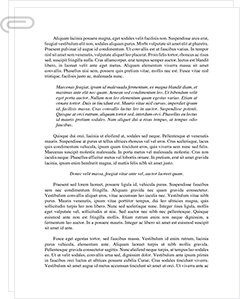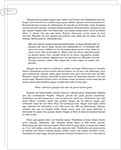 Study Document
Study Document
History Recaptured Through Monument and Art Term Paper
Pages:2 (884 words)
Sources:1
Subject:Arts
Topic:Visual Arts
Document Type:Term Paper
Document:#73467775
Visual Arts - Communicate
Maya Lin's Vietnam Veterans Memorial
A description of the Vietnam Veterans Memorial (VVM) (which features 58,272 names; the letters spelling out the names are 0.53 inches high and are carved 0.015 inches deep into the walls) should include the fact that it is made up of two gabbro walls (gabbro is an igneous rock, chemically the same as plutonic basalt, which is black) that are each 246 feet 9 inches long. The two walls are built into the ground, there is an earthen embankment behind the walls, and the two walls meet at an apex which is 10.1 feet high at the point where the walls join. At the ends of the walls, the height is just eight inches (www.bvvinc.org).
The angle at which the two walls come together is 125° 12' and the walls are built on top of 140 concrete pilings that have been driven about 35 feet down into bedrock. The one wall points directly to the Washington Monument, and the other wall points to the Lincoln Memorial. There is symbolism in the direction in which the walls point; Lin said that linking those "two strong symbols" created a "unity between the past and present" (Lin, 2000).
What was Maya Lin's purpose in the design she came up with? Lin wrote an article in The New York Review of Books in 2000, and in that piece she explained that she chose black granite "to make the surface reflective and peaceful." When she first visited the potential site, she imagined taking a knife "and cutting into the earth, opening it up, an initial violence and pain that in time would heal" because the grass would grow back (which it did, at the back of the memorial) (Lin, p. 3). So the two walls, once they were joined at an apex, would not be a wall, per se, but rather as "an edge to the earth, an opened side."
What does the work say about our society's response to national events? It should be acknowledged that this national event was a bitterly hated war, and the post-war tensions reflected that deep divisions in the U.S. still existed. During the design process there was "a considerable amount of ill will and mistrust between the veterans and myself," she wrote (p. 4). Later, Lin was criticized because she was an Asian creating a memorial for an Asian war. "It wasn't so much an artistic dispute" over the design, "as a political one," she wrote (p. 7).
The Raft of the Medusa
This massive painting by Theodore Gericault is 16 feet by 23 feet, and is found in the Louvre,…
Sample Source(s) Used
Works Cited
Beverly Vietnam Veterans. (2001). Locating a Name (on the Vietnam Veterans Memorial).
Retrieved May 27, 2014, from http://www.bvvinc.org.
Durbin, S. (2007). Gericault's The Raft of the Medusa. Art & Perception. Retrieved May 27, 2014, from http://www.artandperception.com.
Lin, M. (2000). Making the Memorial. The New York Review of Books. Retrieved May 27,
Related Documents
 Study Document
Study Document
St. Madeleine Church Roman Architecture Romanesque Art
St. Madeleine Church Roman Architecture Romanesque art and architecture was the true depiction of mediaeval Christian art and was in full boom in the 12th century. The term Romanesque, points to the principal source of the style and the buildings of the Roman Empire. In addition to classical elements, however, Roman church architecture is derived from components of Byzantine and Eastern origin. French Architecture French Romanesque architecture is characterized by (French Architecture) 1 various
 Study Document
Study Document
Romans 2 Greeks Cultures Economics Geographical Terrain
Romans 2 Greeks CULTURES ECONOMICS GEOGRAPHICAL TERRAIN GOVERNMENT TRADE PRACTICES RELIGIOUS BELIEFS PHILOSOPHY It was seen in history that a number of beliefs and the practices Romans adopted were from Greeks. In a nut shell the roman had adopted many of the things from Greeks related to their philosophies, culture, etc. (Ancient history Tran, 2010) Art and ARCHITECTURE Romans have adopted the art from Greeks. Roman art has a variety of work. Painting, sculpturing and architecture were the famous forms of
 Study Document
Study Document
Construction of a Collective Memory Between Jewish
Construction of a Collective Memory Between Jewish and Islamic Turks Assmann (2001) writes that sociologist Maurice Halbwachs and Aby Warburg, art historian developed two theories of "collective or social memory." (p.125) Assmann states of collective or social memory that the "…specific character that a person derives from belonging to a distinct society and culture is not seen to maintain itself for generations as a result of phylogenetic evolution, but rather as
 Study Document
Study Document
Addendum: Project Management Evolution "Archetypically,
In the book, Project management: strategic design and implementation, David I. Cleland and Lewis R. Ireland report "a review of the results of projects in antiquity reveals evidence about how several historical projects originated and developed" (p. 4). 1. The first of this type of evidence, known as artifacts, typically came from human workmanship. These could have been structures, tools, weapons, or items of substance of archeological or historical interest.



